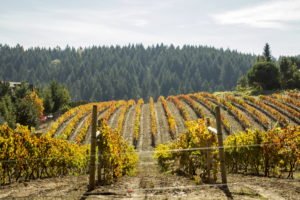Blog entry by Bruce McPherson

With a wide and global customer base, drone mapping platform DroneDeploy is continually identifying new uses for drone technology. Precision agriculture was one of the early adopters of drone technology: and now, more vineyards are adopting drones to make better wine.
It’s not the romantic view of the wine industry pictured on travel brochures, but drones are helping growers to identify and flag diseased plants before they are able to spread and infect the rest of the crop.
Using drones to gather data is a huge time saver – what could take workers a week walking up and down the rows takes a drone only minutes to achieve with 95% accuracy. Gathering the data quickly also ensures that diseases are dealt with quickly – and that’s an enormous savings for the industry. While there are many diseases that commonly attack wine grapes, research published in California Agriculture says that just one of these – Pierce’s disease – costs California growers over $100 million a year: a few years ago, Wine Spectator called the spread of vine disease “A Dire Threat to Grapevines and Wine.”
Viticulture, and agriculture in general, can be a challenging business, requiring expert analysis to meet challenges like disease. “In agriculture broadly, we’re seeing greatest adoption from service providers – from agronomists who go on site to provide information to growers,” says DroneDeploy co-founder and CEO, Mike Winn. “And they’re starting that whole process with a drone.” Winn explains that agronomists will start a consultation by flying over the fields and using DroneDeploy’s LiveMap product to get an instant aerial view of the area.
“The key component of this is efficiency,” says Winn. “People are busy – there is always time pressure. Speed is of critical importance: not just how long it takes to get the data, but how long it takes to process and use it.” LiveMap has been a game changer. Instead of traditional full processing, which is extremely detailed but can take time, LiveMap processes as you fly. “This is a product we’ve been building for almost three years,” says Winn. “We can build a map and update literally every second. It’s the fastest way to get an idea of what’s going on on the ground – to see immediately what’s going on.”
Growers are looking for variances in color that could indicate an issue. “Customers can spot variances immediately,” says Winn, “and some of them start walking out to the affected area while the drone is still in the air.” Winn says that the majority of agricultural data that DroneDeploy processes is through LiveMap, which has progressed to the point that it can be hard to distinguish between LiveMap and fully processed data.
“We’re able to leverage continued advancements in mobile technology and computer vision,” says Winn. “That’s enabling LiveMap to become a really powerful.” In addition to instant processing, the company introduced two more new features in January which are helping agronomists to be even more effective. Terrain following automatically adjusts the altitude of the drone to follow the terrain: which makes the flight safer and the data more accurate. DroneDeploy also partnered with drone manufacturer DJI and sensor experts MicaSense to introduce multispectral processing capability. “That’s really important to the research communities in agriculture,” says Winn. “Multispectral allows you to capture scientifically calibrated data and from that we can pull out detailed insights that allow you to detect health problems more easily.”
In all areas of agriculture, including viticulture, drones are becoming a standard part of the agronomist’s toolkit. One reason is that drone data has become so much easier to access; another is simply a question of exposure. “We’re seeing adoption of the technology create more adoption,” says Winn. “We’re now seeing very large deployments of drones – our biggest agricultural customer has over 1,000 pilots. That’s exposing more and more people to drone data, and that’s creating more demand.”
“Agriculture has always been thought of as a big opportunity for drones – but now we are seeing drones used by the largest agriculture companies. That’s because drones have become very efficient and cost effective tools,” Winn says.
Posted By: Miriam McNabb